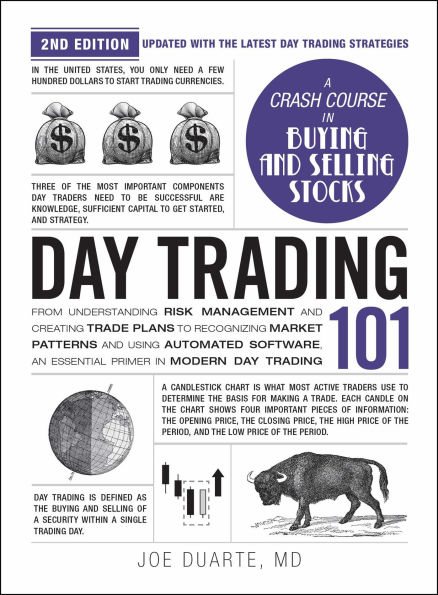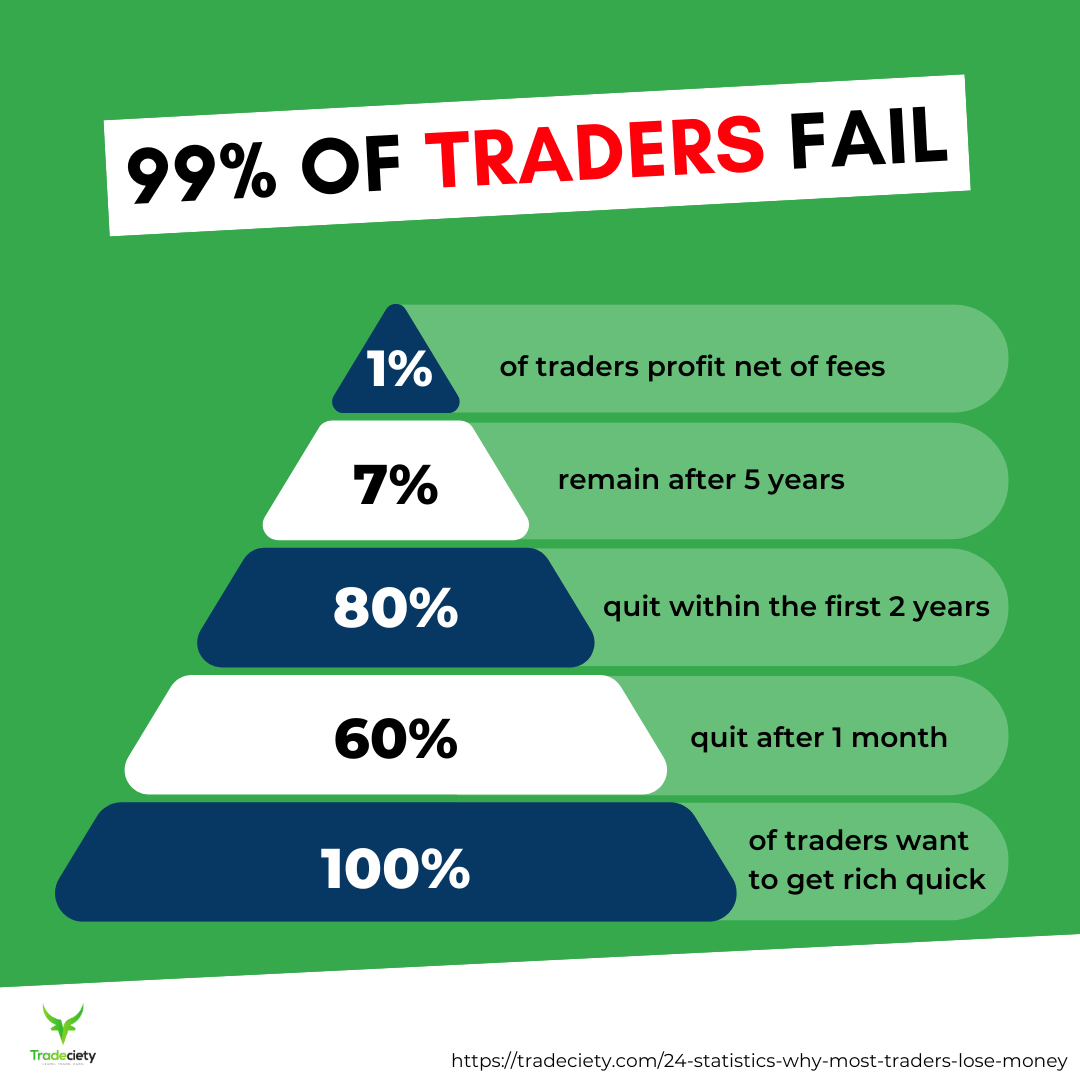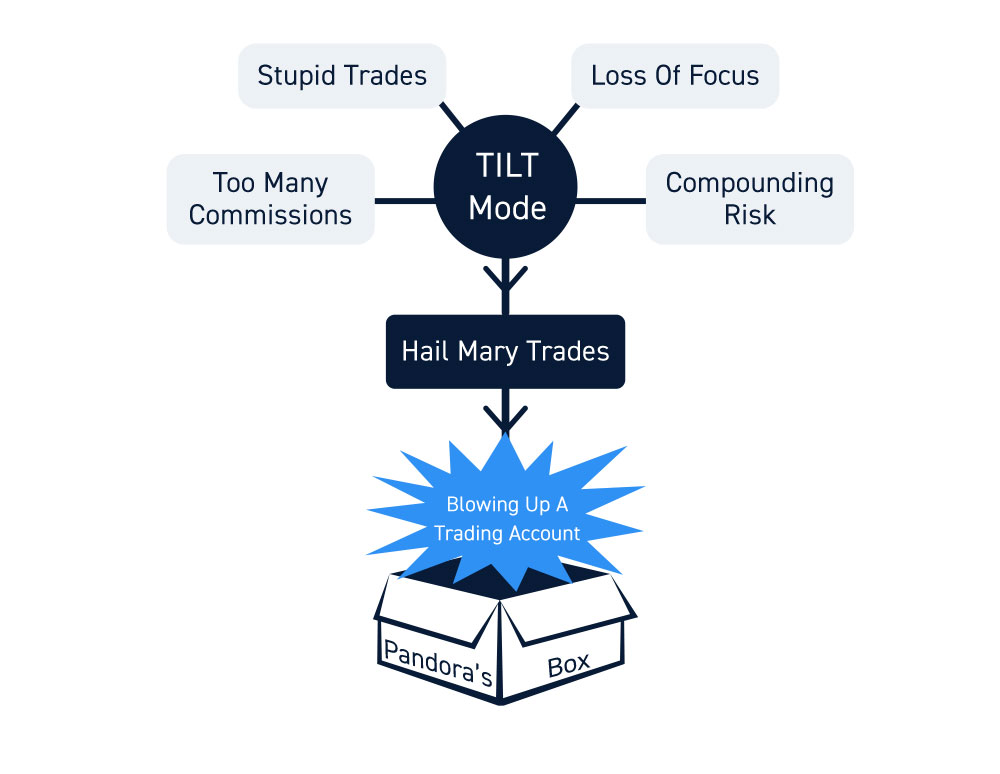Did you know that day trading is often compared to surfing—a thrilling ride that can quickly turn into a wipeout? In this article, we delve into the multifaceted risks associated with day trading, highlighting key concerns for traders at all levels. From the dangers of leverage and market volatility to the psychological factors that can derail your success, we cover it all. You'll learn how lack of experience, unexpected news, and poor risk management can lead to significant financial losses. We also discuss the impact of technology failures, emotional trading, and transaction costs on profitability. Moreover, we explore the regulatory landscape and emphasize the importance of having a solid trading plan. Join DayTradingBusiness as we navigate these risks to help you make informed trading decisions.
What are the main risks of day trading?
The main risks of day trading include:
1. Market Volatility: Prices can change rapidly, leading to significant losses.
2. Leverage Risk: Using borrowed funds can amplify losses beyond the initial investment.
3. Emotional Stress: The fast-paced nature can lead to impulsive decisions and burnout.
4. Lack of Research: Inadequate analysis can result in poor trading choices.
5. High Transaction Costs: Frequent buying and selling can erode profits through commissions and fees.
6. Regulatory Risks: Changes in regulations can impact trading strategies and profitability.
7. Technical Failures: System outages or glitches can hinder trading and lead to losses.
Understanding these risks is crucial for anyone considering day trading.
How can leverage increase risks in day trading?
Leverage can significantly increase risks in day trading by amplifying both gains and losses. When traders use borrowed funds to increase their position size, even small market movements can lead to substantial losses. If a trade goes against them, they may face margin calls, forcing them to sell positions at a loss. Additionally, high leverage can lead to emotional decision-making, increasing the likelihood of rash trades and further losses. Essentially, while leverage can boost profits, it also heightens the risk of losing more than the initial investment.
What psychological factors affect day trading success?
Emotional discipline is crucial in day trading success. Fear and greed can lead to impulsive decisions, causing losses. Overconfidence may result in taking excessive risks without proper analysis. Cognitive biases, like loss aversion, can prevent traders from cutting losing positions. Stress management is vital; high stress can cloud judgment and lead to mistakes. Additionally, a solid trading plan helps maintain focus and reduces emotional reactions to market fluctuations.
How does market volatility impact day trading risks?
Market volatility increases day trading risks by amplifying price fluctuations, making trades more unpredictable. High volatility can lead to larger potential gains but also greater losses, as rapid price swings may trigger stop-loss orders or margin calls. Additionally, the emotional stress from dealing with sudden market changes can lead to impulsive decisions, increasing the likelihood of mistakes. Traders must stay alert and adapt quickly, as volatility can change market conditions in seconds.
What role does lack of experience play in day trading?
Lack of experience in day trading can lead to poor decision-making and significant financial losses. Inexperienced traders often struggle with risk management, fail to recognize market patterns, and may react emotionally to price fluctuations. This can result in overtrading or holding onto losing positions too long. Without a solid understanding of strategies and market behavior, new traders are more susceptible to scams and misinformation. Ultimately, insufficient experience increases the likelihood of costly mistakes, making it crucial to gain knowledge and practice before committing real capital.
How can unexpected news affect day trading outcomes?
Unexpected news can significantly impact day trading outcomes by causing rapid price fluctuations. Positive news can lead to sharp price increases, allowing traders to profit quickly. Conversely, negative news can trigger steep declines, resulting in losses. Traders must stay informed and react swiftly to mitigate risks and capitalize on opportunities. This volatility underscores the importance of risk management and having a clear trading plan.
What are the financial risks associated with day trading?

The financial risks associated with day trading include significant potential for loss, high transaction costs, and market volatility. Traders can quickly lose capital due to rapid price fluctuations. Leverage amplifies both gains and losses, increasing the risk of losing more than the initial investment. Emotional decision-making can lead to poor trades, and the need to stay constantly informed can cause stress and burnout. Additionally, regulatory changes can impact trading strategies and profitability.
How can poor risk management strategies lead to losses?
Poor risk management strategies in day trading can lead to significant losses by exposing traders to excessive market volatility without adequate safeguards. For instance, not setting stop-loss orders can result in holding losing positions too long, magnifying losses. Over-leveraging also increases risk; traders may invest more than they can afford to lose, amplifying financial damage. Additionally, failing to diversify can leave a trader vulnerable if a single asset underperforms. Emotion-driven decisions, such as chasing losses or trading impulsively, further exacerbate the risk of substantial financial setbacks.
Why is emotional trading a significant risk for day traders?
Emotional trading is a significant risk for day traders because it leads to impulsive decisions driven by fear or greed. This can result in overtrading, where traders take unnecessary risks to recover losses or chase profits. Emotional reactions can cloud judgment, causing traders to ignore their strategies or market analysis. Additionally, stress and anxiety can impair focus, leading to mistakes. Ultimately, emotional trading can erode capital quickly, making it a critical risk to manage in day trading.
How can technology failures impact day trading?

Technology failures can significantly impact day trading by causing missed trades, delayed order executions, or incorrect transaction data. A system crash might prevent traders from accessing real-time market information, leading to poor decision-making. Connectivity issues can result in losing access to trading platforms, while software glitches can misrepresent stock prices, resulting in unexpected losses. In short, technology failures can disrupt strategy execution and increase financial risk in day trading.
What are the tax implications of day trading risks?
Day trading can lead to significant tax implications. Profits from day trading are typically taxed as short-term capital gains, which are taxed at your ordinary income rate. Losses can offset gains but must be reported. If your trading qualifies as a business, you might deduct expenses, but this requires meeting specific criteria. Additionally, traders must be aware of the wash sale rule, which disallows losses if you repurchase the same securities within 30 days. Understanding these aspects is crucial for managing your tax liabilities effectively.
Learn about Tax Implications of Forex Day Trading
How do transaction costs influence day trading profitability?
Transaction costs significantly impact day trading profitability by eroding potential gains. Higher fees on trades reduce the margin for profit, making it essential for day traders to execute high-volume, low-cost trades. If a trader frequently buys and sells, even small commissions or spreads can accumulate quickly, eating into returns. Effective risk management must account for these costs; otherwise, a trader could end up losing money despite making the right trades. Minimizing transaction costs through choosing low-fee brokers or efficient trading strategies is crucial for maintaining profitability in day trading.
What are the Risks of Day Trading?
Day trading is the practice of buying and selling financial instruments within the same trading day to capitalize on short-term market movements. The risks involved in day trading include significant financial loss due to market volatility, emotional stress from rapid decision-making, and the potential for increased transaction costs. Additionally, day traders face the risk of leverage amplifying losses, and the need for extensive market knowledge can lead to poor decisions if not managed properly.
Learn more about: What is Day Trading?
What regulations should day traders be aware of?
Day traders should be aware of the following regulations:
1. Pattern Day Trader Rule: If you execute four or more day trades within five business days, you must maintain a minimum balance of $25,000 in your account.
2. SEC Regulations: Ensure compliance with the Securities and Exchange Commission rules, including proper reporting and disclosure practices.
3. FINRA Rules: Follow Financial Industry Regulatory Authority guidelines for trading practices and margin requirements.
4. Tax Implications: Understand wash sale rules and how day trading profits are taxed, typically as short-term capital gains.
5. Brokerage Policies: Each brokerage may have specific rules, including commissions, margin calls, and trading limits.
Stay informed about these regulations to manage risks effectively.
How can overtrading increase the risks of day trading?

Overtrading can significantly increase the risks of day trading by leading to poor decision-making, higher transaction costs, and emotional burnout. When traders overtrade, they often make impulsive choices, ignoring analysis and strategy. Increased trading volume raises commissions and fees, eating into profits. The stress of constantly trading can cause fatigue, leading to mistakes and missed opportunities. Ultimately, overtrading can deplete capital quickly and amplify losses, making it a critical risk to manage.
What are the risks of relying on day trading signals?
Relying on day trading signals can lead to significant risks, including:
1. False Signals: Many signals are based on algorithms or patterns that can mislead traders, resulting in losses.
2. Overtrading: Dependence on signals may encourage impulsive trades, increasing transaction costs and risks.
3. Lack of Understanding: Relying solely on signals can hinder your learning and market understanding, leaving you vulnerable.
4. Market Volatility: Signals may not account for sudden market changes, leading to unanticipated losses.
5. Emotional Trading: Fear of missing out (FOMO) or panic can drive decisions based on signals rather than strategy.
Careful consideration and a solid trading strategy are essential to mitigate these risks.
How can a lack of a trading plan heighten risks in day trading?
A lack of a trading plan increases risks in day trading by leading to impulsive decisions and emotional trading. Without a clear strategy, traders may chase losses or enter trades based on fear or greed, which can result in significant financial losses. Additionally, inconsistent approaches can cause missed opportunities and increased exposure to market volatility. A well-defined trading plan helps manage risk by setting entry and exit points, defining stop-loss levels, and maintaining discipline. Without it, traders are more likely to overlook these critical risk management strategies, amplifying their potential for losses.
Learn about How to Create a Day Trading Options Plan
Conclusion about The Risks Involved in Day Trading
In summary, day trading carries a multitude of risks, from market volatility and leverage to psychological factors and technology failures. Understanding these risks is crucial for any trader looking to navigate the complexities of the market effectively. By implementing sound risk management strategies and maintaining a disciplined approach, traders can mitigate potential losses. For comprehensive insights and guidance on managing these risks, turn to DayTradingBusiness for expert support.
Sources:
- Day Trading for a Living? by Fernando Chague, Rodrigo De-Losso ...
- "The Myth of Profitable Day Trading: What Separates the Winners ...
- Intraday Value at Risk (IVaR) using tick-by-tick data with application ...
- Can Day Trading Really Be Profitable?
- Ex-dividend day trading: Who, how, and why?: Evidence from the ...